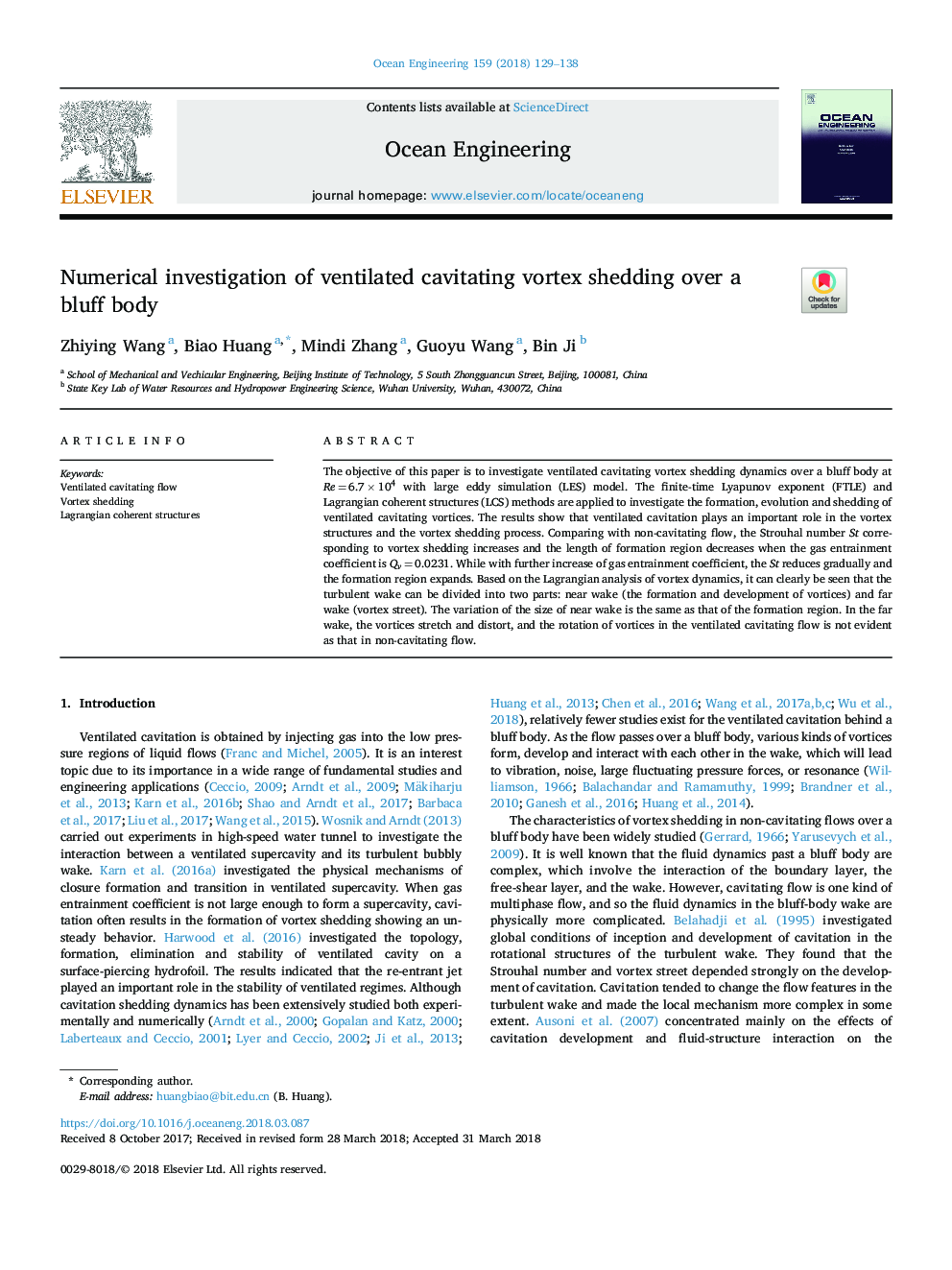| Article ID | Journal | Published Year | Pages | File Type |
|---|---|---|---|---|
| 8062311 | Ocean Engineering | 2018 | 10 Pages |
Abstract
The objective of this paper is to investigate ventilated cavitating vortex shedding dynamics over a bluff body at Reâ¯=â¯6.7â¯Ãâ¯104 with large eddy simulation (LES) model. The finite-time Lyapunov exponent (FTLE) and Lagrangian coherent structures (LCS) methods are applied to investigate the formation, evolution and shedding of ventilated cavitating vortices. The results show that ventilated cavitation plays an important role in the vortex structures and the vortex shedding process. Comparing with non-cavitating flow, the Strouhal number St corresponding to vortex shedding increases and the length of formation region decreases when the gas entrainment coefficient is Qvâ¯=â¯0.0231. While with further increase of gas entrainment coefficient, the St reduces gradually and the formation region expands. Based on the Lagrangian analysis of vortex dynamics, it can clearly be seen that the turbulent wake can be divided into two parts: near wake (the formation and development of vortices) and far wake (vortex street). The variation of the size of near wake is the same as that of the formation region. In the far wake, the vortices stretch and distort, and the rotation of vortices in the ventilated cavitating flow is not evident as that in non-cavitating flow.
Related Topics
Physical Sciences and Engineering
Engineering
Ocean Engineering
Authors
Zhiying Wang, Biao Huang, Mindi Zhang, Guoyu Wang, Bin Ji,
